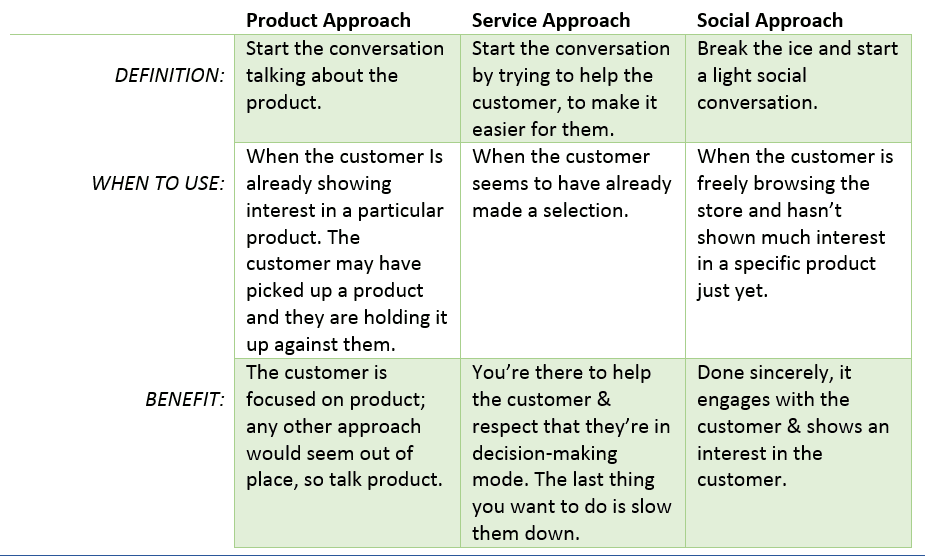What is Communication?
Communication is defined as “the imparting or exchanging of information by speaking, writing, or using some other medium: “television is an effective means of communication.”

A key part of any retailer’s success is their ability to maintain a welcoming customer environment. In retail, the purpose of the communication process is to provide an effective service and experience to customers.
The communication process
Good communication is an excellent ability in an employee and one that can enhance all stages of your career. Employers in all industries rank it at the top when asked what they want in an ideal employee.
This is why it is vital to you personally, as well as to your workplace that you communicate with customers and your colleagues in effective ways. Use this unit to check that your communications skills are up to date and to learn new ones.
Communication is about messages. A message is sent and received. Unless both processes take place, communication does not happen.
Methods of Communication
There are many ways to communicate in the workplace now and some of those ways include:
- face-to-face
- telephone
- retail documents e.g. forms/invoices
- SMS
- facsimile (fax)
- internet
- message boards
So, as you can see a message can be communicated in many different ways. The way the message is sent is called a channel of communication.
Communication channels can be:
- Non-verbal
Non-verbal communication is either visual or uses body language
The first communication is non-verbal. The customer gets a general message from the layout of the store and its colours, signs, noises, aromas and ‘atmosphere’. Ideally the message is one of welcome and the customer feels welcome and pleased to be there.
Verbal (i.e. using words)
Verbal communication is either spoken or written
Once the customer talks to a sales assistant, the assistant’s verbal skills, both speaking and listening, are now needed. This can also include signage, text messages, advertisements etc…

Communication Strategies -Engaging your customer
Engagement happens when you first make contact with the customer. It could be an acknowledgment through a smile, nod or an “I’ll be with you in just a second” comment if you are already with someone. It is also the first conversation you have with them beyond the acknowledgment, when you have approached the customer.
Engagement is so important; it sets the tone for the customers shopping experience and either defines the brand for the first time or reinforces an experience for regular customers. Did you know that customers are 4-times more likely to purchase when greeted, compared to when they are ignored? Did you know that they are also 100% less likely to steal from you if you greet them with eye contact!
Acknowledging the customer
Acknowledging the customer as they enter the store demonstrates that you have recognised their presence and should convey a friendly attitude. Imagine if you were welcoming someone into your home, you would smile; your body language would be open and you would maintain eye contact.
This acknowledgement may be verbal or nonverbal.
- A verbal acknowledgement can be exchanging some form of pleasantry such as “Good morning, lovely day today”, “Hello” or “Hi!”
- A non-verbal acknowledgement can be making eye contact with customers and smiling and nodding if you are busy with another customer.
- Welcoming the customer makes it easier to build up trust and a relationship later on
- When greeting a customer use your own personality to create a unique opportunity to start building rapport quickly
- Make sure your body language is open and remember it is about being interested not ‘interesting’
- When busy with tasks, remind yourself to look up regularly, scan for customers and look for opportunities. It may seem simple, but never let a task come before a customer
- Approach the customer when they have had adequate time to ‘look around’ or they are clearly interested in a product.
Types of approaches
The way in which you approach the customer should be adapted to the type of shopper he appears to be. Watching your customer before you approach will allow you to decide the most effective approach. See below the three basic ways to initially engage with the customer:

Managing the “I’m just looking” customer
No matter how well you approach, sometimes a customer will not want any attention or service from you at this time. The most important thing is to not see this as a rejection. This does not mean they don’t want to communicate at all it just means the customer initially wants some time alone, they are generally looking for ‘something’.
There are reasons why customers resist attention. These can include:
- A fear of being pressured
- They are not sure of what they want
- They are shy
- They do not want to be rushed
- They just don’t need any help
When a customer answers your approach with “I’m just looking”, or “I’m happy browsing”:
- Maintain open body language and smile
- Encourage the customer to stay and browse
- Make appropriate comments such as: “Just let me know if there is a particular area I can direct you to,” or “That’s fine, just wanted to let you know that we have 20% off throughout the store today.”
Looking to learn the art of Leadership? The ARA Retail Institute provides leading accredited training options including workshops and masterclasses in Leading and Developing Staff. Have a look at our classes below.
{{cta(‘f80af7d3-01f8-4f83-a79d-3e15679e5139′,’justifyleft’)}}{{cta(‘b3cfa9ad-c890-4747-a2fe-dcf6b45312af’,’justifyleft’)}}



















